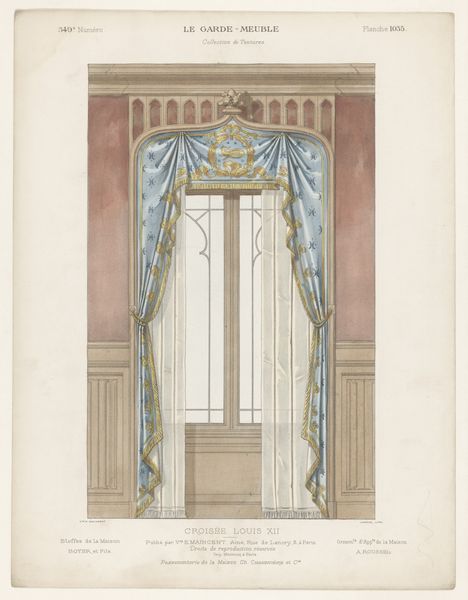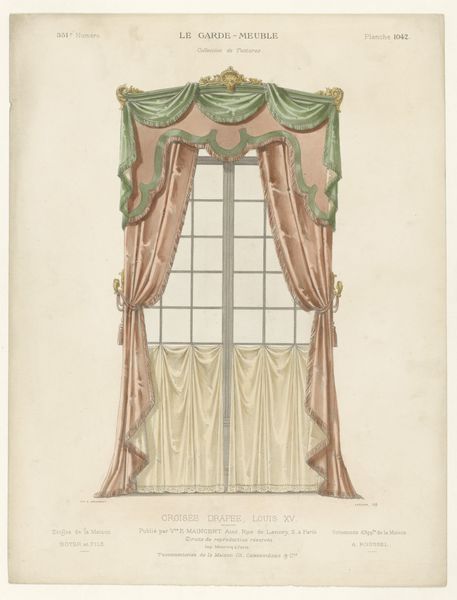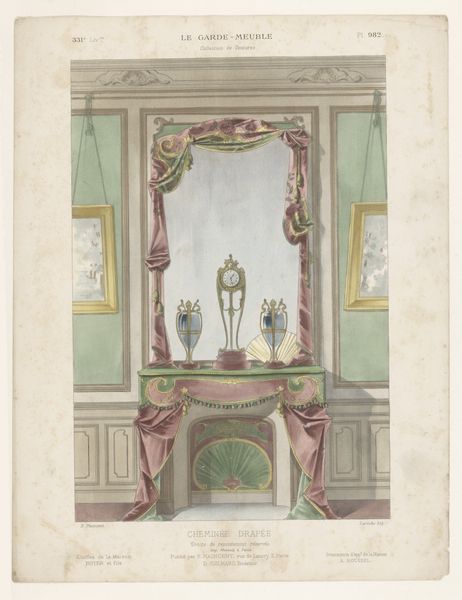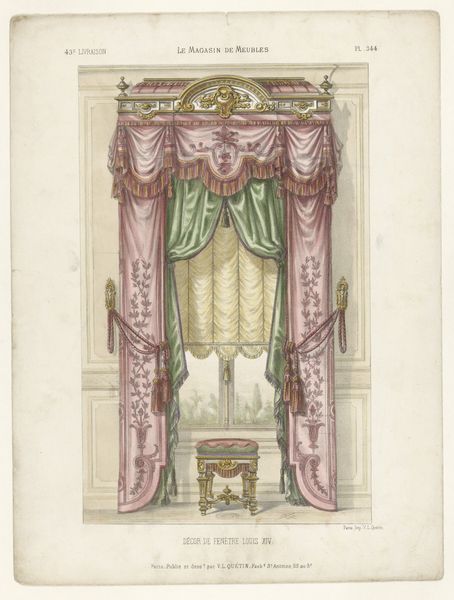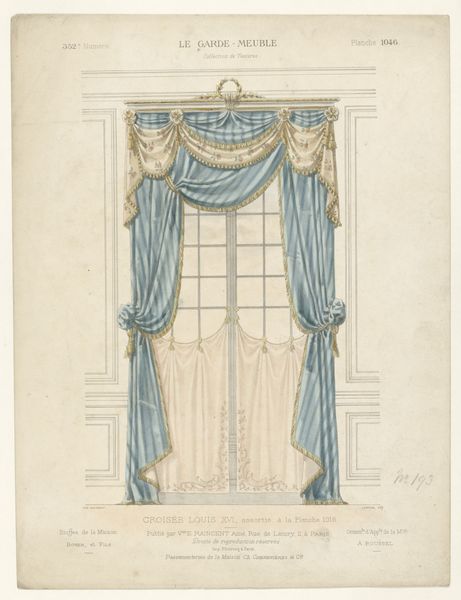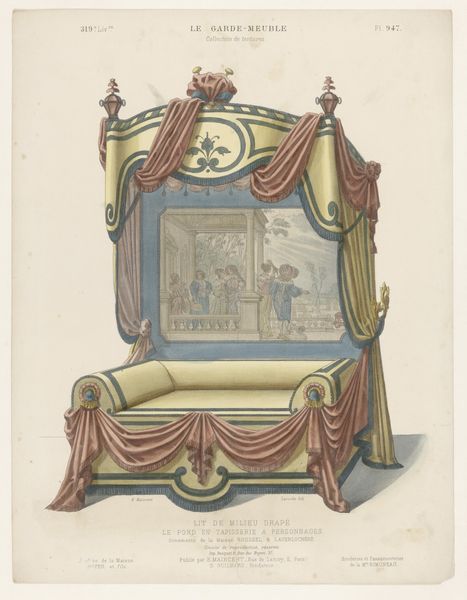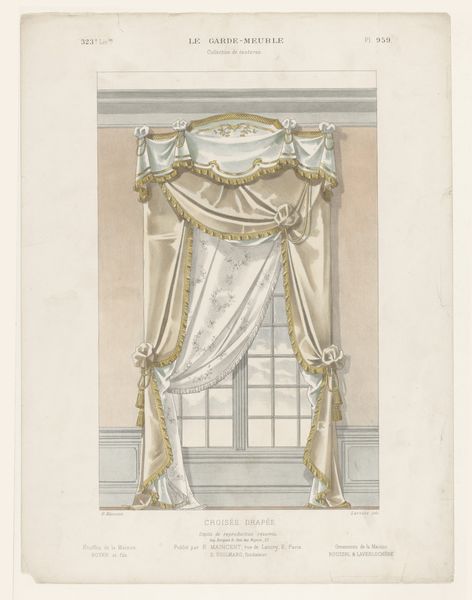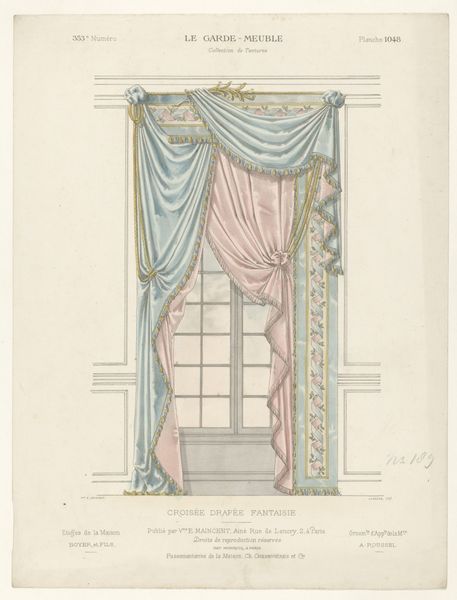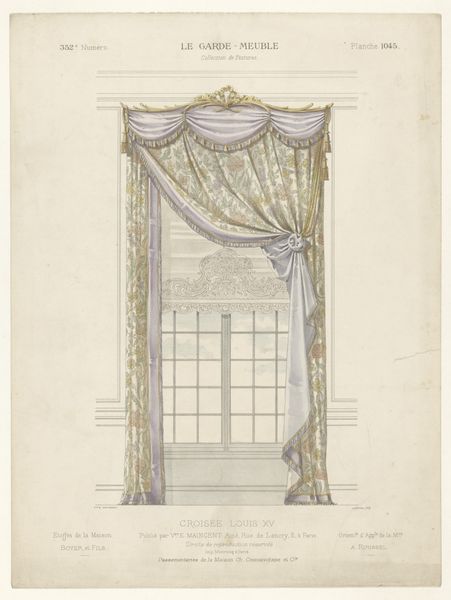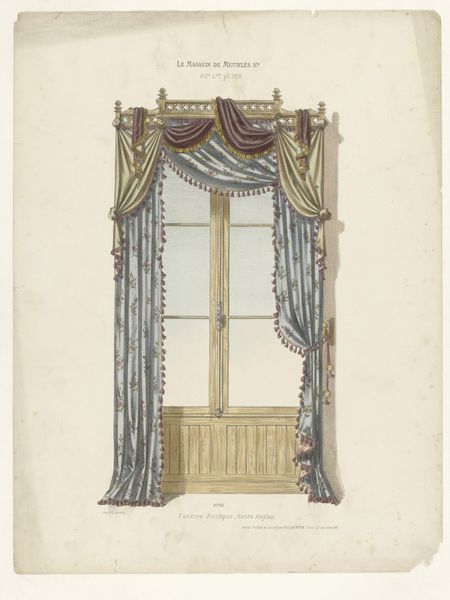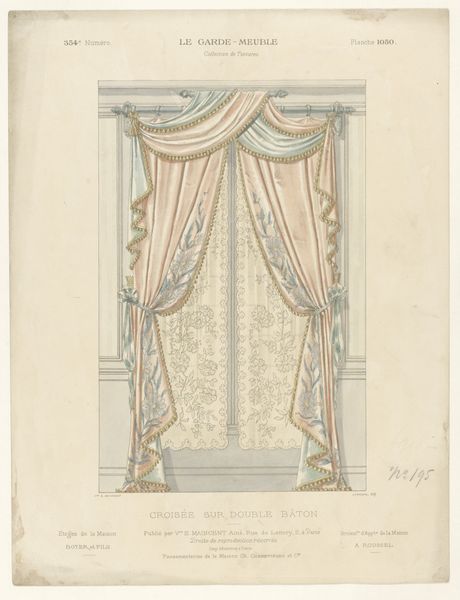
Dimensions: height 357 mm, width 273 mm
Copyright: Rijks Museum: Open Domain
Curator: This print is titled "Venster met gordijnen", dating from circa 1885-1895, by the artist Léon Laroche. The medium appears to be engraving on paper. What’s your first take? Editor: Wow, it's an ornate, gilded cage, isn’t it? All this detailing… is this celebration of extreme opulence really necessary or reflective of any functional value? The room almost seems like an afterthought! Curator: Indeed. What we’re seeing depicted is an elaborate window treatment, “Croisée a Cantonnière Louis XIV,” reflecting an interest in historical revival prevalent at the time, referencing the reign of Louis XIV. It’s not merely about function. Editor: Right. The layers are remarkable! The curtains create visual depths and feel very luxurious; this could not possibly shut out light from outside. Were we meant to block the view, or create one? And for whom? Curator: The image actually comes from a publication called "Le Garde-Meuble", which catered to those seeking luxurious interior design ideas. These weren't practical blueprints as much as aspirational images meant to evoke status, to inspire, to shape bourgeois dreams through control over material surroundings. Editor: Exactly! It reflects an interesting dynamic – who designs for whom? Were they marketing a lifestyle obtainable for most people, or enforcing aspiration from the few elite onto society’s aspirations at large? It feels prescriptive, doesn’t it? The whole construction and framing seems calculated, from the choice of motifs right down the color schemes of that specific period... Curator: Definitely. We see a distinct choice for a baroque style with its associations to wealth and established authority. This is not simply decoration, but the reinforcement of an entire social hierarchy that is intrinsically visible, but it's an illusion of a perfect lifestyle. Editor: You can almost touch the weight of expectation! Thanks, I see it as a reflection of historical materialism. The level of artistry definitely provides a window to that period's sensibilities. Curator: Yes, and how those aesthetics worked within power dynamics to define identity through interiors, so it shows how visual imagery can offer social insight.
Comments
No comments
Be the first to comment and join the conversation on the ultimate creative platform.
